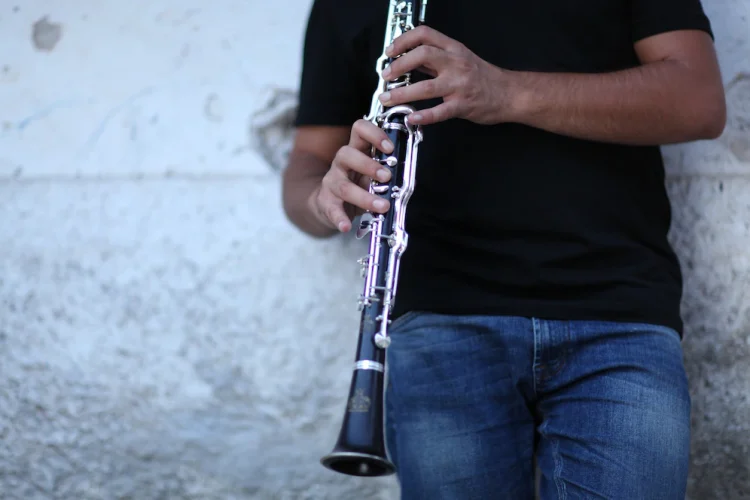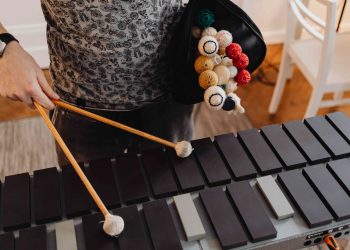The clarinet is an incredibly popular woodwind instrument. It is used in genres like classical, jazz, and even in movie scores. The clarinet is commonly found in orchestras and marching bands all over the world, providing the perfect accompaniment to any ensemble. Whether you’re looking for a beginner-level instrument or something higher-end, this guide will help you find the perfect clarinet. In this article, we’ll discuss the top 10 best clarinets. We’ll review their features, quality, sound, and pricing so that you can pick the right instrument for your level of playing. We will also look at various accessories and brands, so that you can customize your clarinet and make it unique. After reading through our article, you’ll have all the information you need to purchase the best clarinet for your needs.
- Jean Paul USA CL-300 Student Clarinet – $249.99 – Rating 9/10 – The Jean Paul USA CL-300 Student Clarinet is a great option for intermediate students or band students looking for a reliable, easy-to-play instrument. Combining an elegant ebonite body with nickel keys, the clarinet boasts beautiful design and sound while maintaining a low price point of $249.99. The clarinet features the Boehm 17 key system, providing excellent response and smooth playability. The cylindrical bore also produces strong projection and a wide range of tones. The package comes with a robust contoured carrying case, Rico reeds, gloves, cleaning cloth, and cork grease for ease of use and maintenance. Additionally, it comes with a 12-month product warranty and customer support. With a rating of 9/10 on Amazon, it’s a popular choice among buyers.
- Hisonic Signature Series 2610 Bb Orchestra Clarinet – $149.99 – Rating 9/10 – The Hisonic Signature Series 2610 Bb Orchestra Clarinet is a high-quality instrument that is perfect for student musicians and professionals. The clarinet features a ebonite body and nickel-silver keys that produce a bright, beautiful tone. The clarinet also includes Prestini pads made in the USA, which are known for their durability and excellent sound quality. The package also includes a protective plush-lined case, mouthpiece with reed protector, cork grease and clarinet swab. This Bb Soprano clarinet is the standard clarinet used for marching band, orchestra, and jazz band. It’s a perfect choice for anyone looking for a high-quality clarinet that delivers a rich and full sound.
- Mendini by Cecilio B Flat Beginner Student Clarinet – $232.62 – Rating 9/10 – The Mendini by Cecilio B Flat Beginner Student Clarinet is a high-quality instrument that is perfect for student musicians. The clarinet features a durable nickel-plated keys, and is made by Mendini by Cecilio, a company that has been inspiring musical talent with quality and value instruments since 2004. Their instruments are top sellers in the band and orchestra categories and cater to beginner and intermediate musicians. Each instrument is tested at Cecilio’s factory overseas and are tested again in their local warehouse in Southern California. The package includes beginner student clarinet, 4C Mouthpiece with Ligature, Cap & a Box of 10 Reeds (Size 2.5″), 2 Barrels, Case, Foldable Clarinet Stand, Pocketbook, Cork Grease, Mouthpiece Brush, Mouthpiece Cushion, Thumb Rest Cushion, Screwdriver, Cleaning Cloth, and a Pair of Gloves. Each instrument comes with a 1-year warranty against manufacturer’s defects and are serviced locally.
- Eastar B Flat Clarinet for Beginner – $109.99 – Rating 8.8/10 – The Eastar B Flat Clarinet is a beginner-friendly instrument designed for both novices and intermediates. It features 2 mouthpiece connectors for easy adjustment and tuning, as well as a Boehm 17 key system for a fast key response and high playability. The clarinet boasts an elegant design with nickel-plated keys and a bakelite body, and is made from high-quality materials such as ABS bakelite and Italian felt double sheep casings. The package includes all the necessary accessories, such as a mouthpiece, thumb sheath, cleaning kit, and white gloves. Additionally, it comes with a 12-month product warranty and customer support.
- Glory GLY-PBK Professional Ebonite Bb Clarinet with 10 Reeds – $99.99 – Rating 8.8/10 – The Glory GLY-PBK Professional Ebonite Bb Clarinet is a high-quality instrument designed for professionals and advanced players. It is made from durable ebonite, which is a hard rubber material known for its rich tone and long-lasting durability. The clarinet comes with 10 reeds, which provide a consistent and reliable sound, and is designed with a professional-grade mouthpiece for optimal performance. The package also includes a cleaning kit and a mouthpiece cover for easy maintenance. Additionally, it comes with a 12-month product warranty and customer support. At a price point of $99.99 this clarinet offers great value for money and a rating of 8.8/10 on Amazon makes it a popular choice among buyers.
- EASTROCK Bb Clarinet 17Nickel Keys ABS – $129.99 – Rating 8.8/10 – The EastRock Bb Clarinet is a high-quality instrument that is perfect for student musicians. The clarinet features an elegant ebonite body and nickel keys that produce beautiful design and sound. The instrument is inspected by technicians to ensure that it meets high standards for intonation, comfort, and mechanical reliability. The package also includes a care kit with gloves, a screwdriver, a cleaning cloth, a shoulder strap, cork joint lubricant, a leather wooden case, and a clarinet stand. The clarinet also has advanced hole-opening technology, finely polished bell mouth, and anti-oxidation and corrosion resistance on the keys.
- Vangoa Clarinet B Flat Beginner Student – $99.95 – Rating 8.8/10 – The Vangoa Clarinet B Flat Beginner Student is a high-quality instrument that is perfect for student musicians. The clarinet features a nickel-plated 17 keys for smooth playing and an ABS resin body that produces a stable, pure, and rich sound. The clarinet has an elegant design with a ring-wrapped bell mouth and durable nickel-plated keys that reduce oxidation and improve corrosion resistance. The clarinet is made of high-level ABS bakelite which ensures a pure and bright sound and stable vibration. The package also includes a 4C mouthpiece, 2 barrels, mouthpiece ligature, hard case, stand, cleaning kit, reeds, white gloves, shoulder strap, pads, and mouthpiece protective cap. It is easy to install and tune, and suitable for many occasions.
- Mendini by Cecillo Bb Clarinet with Case – $129.99 – Rating 8.8/10 – The Mendini by Cecilio Bb Clarinet with Case is a high-quality, beginner-friendly instrument that is perfect for student musicians. The clarinet comes as a complete set, including a case, mouthpiece, box of 10 reeds (2.5″), cork grease, a cleaning cloth, gloves, a pocketbook, a stand, and a clarinet. This clarinet is easy to use and lightweight, making it perfect for orchestra concerts, home use, and practice rooms. The clarinet is made of high-grade plastic casting, with sturdy, nickel-plated keys which gives it an elegant and durable finish. The set also comes with a beginner’s pocketbook, filled with tips, tricks, and more, making it a great gift for aspiring young musicians or older players looking to learn a new instrumental skill.
- Mendini by Cecilio B Flat Beginner Clarinet with 2 Barrels – $169.99 – Rating 8.8/10 – The Mendini by Cecilio B Flat Beginner Clarinet with 2 Barrels is a high-quality instrument that is perfect for student musicians. The clarinet is designed with a durable, high-grade plastic body and sturdy nickel-plated keys, which provides a smooth, sleek finish. It comes with 2 barrels, that allows the player to adjust the tuning of the instrument, making it more versatile. The package also includes a beginner’s pocketbook filled with tips and tricks, a mouthpiece with ligature and cap, a box of 10 reeds (Size 2.5″), cleaning cloth, gloves, cork grease, a hard case, and a foldable clarinet stand. This clarinet is easy to use and lightweight, making it perfect for orchestra concerts, home use, and practice rooms. The instrument is also backed by a 1-year warranty against manufacturer’s defects, and is serviced locally.
- Yasisid Bb Clarinet – Band Clarinet for Beginner Student – $79.99 – Rating 7.6/10 – The Yasisid Bb Clarinet is a high-quality, beginner-friendly instrument that is perfect for student musicians. The clarinet features an elegant design, consisting of a wooden mouthpiece, an ABS resin tube body, and 17 standard-sized keys. The clarinet is designed with excellent craftsmanship and is digitally mechanically perforated to improve the stability of intonation. The instrument is easy to play, and the sound is smooth, bright, and full-bodied. It is suitable for student, beginner, and beginner players. The package includes a mouthpiece, making it a perfect choice for a beginning music student. It’s a great investment for those who are just starting to learn how to play the clarinet and for those who want to participate in bands or orchestras.
Frequently Asked Questions
[faq-schema id=”127311″]
Clarinet Selection Tips
When it comes to selecting a clarinet, there are several factors to consider to ensure that you get the best instrument for your needs. Whether you’re a beginner or a professional, it’s important to take the time to research and find the right clarinet for you.
First and foremost, consider your skill level. If you’re a beginner, you’ll want to look for a clarinet that is easy to play and has a smooth, responsive action. Many beginner clarinets are made of plastic, which makes them lightweight and affordable. They also tend to have simpler key mechanisms, which make them easier to play.
Another important factor to consider is the material of the clarinet. The most common materials used to make clarinets are wood, plastic, and metal. Wooden clarinets are considered to be the best in terms of sound quality, but they are also the most expensive and require the most maintenance. Plastic clarinets are a great option for beginners because they are lightweight and affordable. Metal clarinets are durable and produce a bright, clear sound, but they are also more expensive than plastic clarinets.
Consider the sound of the clarinet, which is another important factor. The sound of a clarinet is determined by its bore, which is the diameter of the inside of the tube. A larger bore will produce a warmer, more resonant sound, while a smaller bore will produce a brighter, more focused sound. Some clarinets have an adjustable bore, which allows you to adjust the sound to your liking.
The keys and key mechanism of the clarinet are also important to consider. The keys are the parts of the clarinet that you press down to produce a sound. Look for a clarinet with well-crafted keys that are smooth and responsive to the touch. The key mechanism refers to the way the keys are connected and how they move. A good key mechanism will ensure that the clarinet is easy to play and that the keys move smoothly.
Another thing to consider when buying a clarinet is the brand. Look for a reputable brand that has a good reputation for producing quality instruments. There are many different brands of clarinets available, so it’s important to do your research and find one that is known for producing high-quality instruments.
Lastly, before you make your purchase, it’s a good idea to try out the clarinet. Many music stores will allow you to play the clarinet before you buy it. This will give you an idea of how the instrument feels and sounds, and whether it’s the right one for you.
Types of Clarinets
There are several different types of clarinets available, each with their own unique characteristics and uses. Understanding the different types of clarinets can help you make an informed decision when choosing the right instrument for you.
The most common type of clarinet is the B-flat clarinet. This is the standard clarinet used in most bands and orchestras, and is also the most common type of clarinet taught in schools. The B-flat clarinet has a range of about three octaves and is capable of producing a wide range of tones and dynamics.
Another popular type of clarinet is the A clarinet. The A clarinet is slightly larger than the B-flat clarinet and has a slightly different fingerings. It is often used in orchestras and bands, and is also a popular choice for jazz and swing music.
The alto clarinet is a larger and lower-pitched version of the B-flat clarinet. It has a range of about two and a half octaves and is often used in orchestras, wind bands, and jazz bands. The alto clarinet is known for its rich, mellow tone and is often used to add depth and color to the
Clarinet Brands
When it comes to choosing a clarinet, there are many different brands to choose from. Each brand offers its own unique features, designs, and price points, making it important to research and compare different brands before making a purchase. Here are some popular clarinet brands to consider:
Selmer: Selmer is one of the most well-known and respected brands in the clarinet world. Selmer has been manufacturing clarinets for over a century and is known for producing high-quality, professional-grade instruments. Selmer clarinets are widely used by professional players and are known for their rich and full tone.
Buffet Crampon: Buffet Crampon is another reputable brand that has been producing clarinets for over 200 years. Buffet Crampon clarinets are known for their excellent intonation, precise keywork, and exceptional sound quality. They offer a wide range of clarinets, from beginner to professional level.
Yamaha: Yamaha is a well-known brand in the music industry, and their clarinets are no exception. Yamaha clarinets are known for their durability, excellent intonation, and easy playability. They offer a range of clarinets for all skill levels and are a popular choice among students and professionals alike.
Leblanc: Leblanc is a brand that has been producing clarinets for over 100 years. They are known for their precise keywork and good intonation. Leblanc clarinets offer a range of models for all skill levels and are popular among beginners and intermediate players. They also offer a line of professional clarinets that are highly sought after by advanced players and professionals.
Eastrock: Eastrock is a brand that has been in the market for a while and known for producing high-quality instruments at an affordable price point. Eastrock clarinets are made with the highest quality materials and are designed to meet the needs of students and beginner musicians. They are easy to play, durable and offer a great value for the money.
Vangoa: Vangoa is a brand that focuses on producing high-quality clarinets at an affordable price. Vangoa clarinets are made of durable ABS resin and are equipped with nickel-plated 17 keys for smooth playing. They offer a full range of accessories, such as gloves, a screwdriver, cleaning cloth, shoulder strap, cork joint lubricant, leather wooden case, and a clarinet stand.
Hisonic: Hisonic is a brand that offers a wide range of clarinets for all skill levels. Hisonic Signature Series 2610 Bb Orchestra Clarinet is a popular choice among professionals and advanced players. The clarinet is made of ebonite and is equipped with nickel-silver keys. It also includes a protective plush lined case, mouthpiece with reed protector, cork grease, and a clarinet swab.
How to Learn to Play the Clarinet (Step by Step)
Learning to play the clarinet can be a fun and rewarding experience, but it can also be a bit daunting for beginners. However, with the right approach, anyone can learn to play the clarinet. Here is a step-by-step guide to help you get started:
Step 1: Get the right equipment: Before you begin, you’ll need to make sure you have the right equipment. This includes a clarinet, reeds, a mouthpiece, a cleaning kit, and a stand. It’s important to invest in a good quality instrument as it will make learning and playing more enjoyable.
Step 2: Learn the basic fingerings: The first step in learning to play the clarinet is to learn the basic fingerings. This will involve learning where to place your fingers on the keys to produce different notes. It’s important to practice these fingerings regularly to ensure that they become second nature.
Step 3: Learn to produce a sound: Once you’ve learned the basic fingerings, you’ll need to learn how to produce a sound on the clarinet. This will involve blowing into the mouthpiece and using your fingers to create a steady stream of air. Practice producing a sound until it becomes easy and consistent.
Step 4: Learn to play scales and simple songs: Once you’ve mastered the basic fingerings and can produce a sound, it’s time to start learning to play scales and simple songs. Start with simple songs that use only a few notes and practice them regularly. As you become more comfortable, you can start to add more notes and more complex songs.
Step 5: Learn to read sheet music: Reading sheet music is an important part of playing the clarinet. Start by learning the basics of sheet music notation, such as the different symbols and how they relate to the notes on the clarinet. As you become more comfortable reading sheet music, you can start to play more complex songs.
Step 6: Practice regularly: Learning to play the clarinet takes time and practice. Set aside a regular time each day to practice, and make sure to practice consistently. It’s important to be patient and not to get discouraged if you don’t see progress right away.
Step 7: Take lessons: While it’s possible to learn to play the clarinet on your own, taking lessons can be extremely helpful. A good teacher will be able to give you guidance and feedback, and help you to identify and correct any mistakes you may be making.
Step 8: Join a band or ensemble: Joining a band or ensemble is a great way to improve your skills and gain experience playing with others. It’s also a great way to make new friends and have fun.
Learning to play the clarinet can be a challenging and rewarding experience. It takes time, patience, and practice to master, but with the right approach, anyone can learn to play this beautiful instrument. Remember to take it step by step, set realistic goals and practice regularly. Most importantly enjoy the journey, playing music should be fun.
Parts of a Clarinet
The clarinet is made up of several different parts, each of which plays an important role in the overall sound and performance of the instrument.
The body of the clarinet is the main part of the instrument and is usually made of wood or plastic. The body is divided into several different sections, including the upper joint, the lower joint, and the bell. The upper joint is the section of the clarinet that is closest to the player’s mouth, and it contains the keys and finger holes that are used to play the different notes. The lower joint is the section of the clarinet that is closest to the player’s hands, and it contains the keys and finger holes that are used to play the lower notes. The bell is the flared section of the clarinet that is located at the end of the lower joint, and it helps to amplify the sound of the instrument.
The mouthpiece of the clarinet is the part of the instrument that the player blows into. It is typically made of hard rubber or plastic and has a reed attached to it. The reed is a small piece of wood or plastic that vibrates when the player blows into the mouthpiece, creating the sound of the clarinet. The shape and size of the mouthpiece can have a significant impact on the sound of the clarinet, so players often experiment with different mouthpieces to find the one that works best for them.
The keys and finger holes of the clarinet are the parts of the instrument that are used to play the different notes. The keys are typically made of metal and are located on the upper and lower joints of the clarinet. They are used to cover and uncover the finger holes, which are located on the body of the clarinet. The finger holes are used to change the pitch of the notes that are played on the clarinet.
The ligature is a band that holds the reed against the mouthpiece. It is usually made of metal and can be adjusted to change the sound of the clarinet.
The barrel of the clarinet is the section of the clarinet that connects the upper joint and the mouthpiece. It helps to adjust the tuning of the clarinet.
The thumb rest and thumb rest cushion are located at the back of the clarinet and provide a comfortable place for the player’s thumb to rest while playing.
The neck strap and the pegs are used to hold the clarinet in place while playing. The neck strap attaches to the clarinet and is worn around the player’s neck, while the pegs are located on the back of the clarinet and are used to secure the instrument to the player’s body.
How to Clean a Clarinet
A clarinet is made up of several different parts, and each of these parts needs to be cleaned and cared for properly in order to keep the instrument in good working condition.
The first step in cleaning a clarinet is to disassemble the instrument. This means separating the upper and lower joints, as well as removing the mouthpiece and any other parts that can be taken apart. When disassembling the clarinet, it is important to be careful not to damage any of the keys or other delicate parts of the instrument.
Once the clarinet is disassembled, it is time to begin cleaning the different parts. The first thing to do is to clean the inside of the instrument. This can be done by using a soft cloth or a small brush to gently wipe away any dirt or debris that has accumulated inside the clarinet. It is important to be careful not to scratch the inside of the clarinet, as this can damage the instrument and affect its sound.
The next step is to clean the keys and finger holes of the clarinet. This can be done by using a small brush or a toothbrush to gently scrub away any dirt or debris that has accumulated on the keys. It is also important to clean the finger holes, as dirt and debris can build up in these areas and affect the sound of the clarinet.
The mouthpiece of the clarinet also needs to be cleaned. This can be done by using a soft cloth or a small brush to gently wipe away any dirt or debris that has accumulated on the mouthpiece. It is also important to clean the reed, as dirt and debris can build up on the reed and affect the sound of the clarinet.
The outside of the clarinet should be cleaned with a soft cloth, wiping away any dirt or smudges.
Finally, it is important to oil the clarinet. This is done by applying a small amount of oil to the hinge rods and other moving parts of the clarinet. This will help to keep the clarinet in good working condition and prevent it from rusting or corroding.
It is also important to keep the clarinet in a case when not in use to protect it from dust and other damage.
It is also recommended to have the clarinet serviced periodically by a professional to ensure that all the parts are in good working condition and to have any repairs made if necessary.
History of the Clarinet
The clarinet is a woodwind instrument that has a rich history dating back to the 17th century. Its origins can be traced back to the early versions of the chalumeau, a simple single-reed instrument that was popular in Europe during the Baroque period. The clarinet as we know it today, however, did not develop until the 18th century, and its invention is attributed to a German instrument maker named Johann Christoph Denner.
Denner, who lived in the town of Nuremberg, is credited with adding several key features to the chalumeau that greatly improved its sound and versatility. He added keys to the instrument, which allowed for greater range and improved tuning, and he also modified the shape of the reed and the mouthpiece, which increased the instrument’s dynamic range. These innovations transformed the chalumeau into the clarinet, a more powerful and expressive instrument that quickly gained popularity among musicians and composers.
The first clarinets were made of wood and were relatively simple in design. They had a range of about two octaves and were primarily used in outdoor music, such as military bands and parades. As the instrument evolved, however, it began to be used in more sophisticated settings, such as orchestras and chamber music ensembles. This led to the development of more advanced clarinets made of materials such as ivory and metal, which improved the instrument’s tone and durability.
One of the most important figures in the history of the clarinet is a German musician and composer named Carl Baermann. Baermann was a virtuosic clarinetist who wrote several influential method books and composed many pieces for the instrument. He also developed a new type of clarinet, known as the Baermann system, which was characterized by a larger bore and a longer keywork. This system became the standard for clarinets in the late 19th century and is still in use today.
Another important figure in the history of the clarinet is a French clarinetist and composer named Ernesto Cavallini. Cavallini was a highly influential performer and teacher who wrote many pieces for the clarinet. He was known for his virtuosity and his ability to play with great expressiveness and lyricism.
The 20th century saw the development of the clarinet in new directions. The development of new materials such as plastic allowed for the mass production of affordable clarinets and increased the popularity of the instrument. Also, the advent of jazz music brought new styles and techniques to the clarinet, and many jazz musicians, such as Benny Goodman and Artie Shaw, became famous for their clarinet playing.
Today, the clarinet is a versatile and popular instrument that is used in many different genres of music, including classical, jazz, and folk. It is played by professional musicians, amateurs, and students around the world, and it continues to be an important part of the world’s musical heritage.
David Mahon is research assistant and part-time writer for SingersRoom.com. David has always enjoyed music and helping others reach their full potential.








